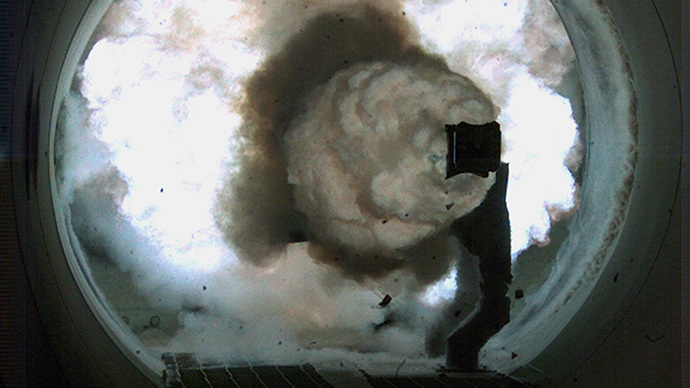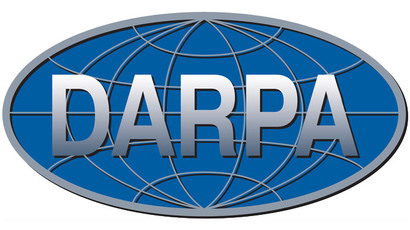US Navy unveils electromagnetic railgun prototypes

Prototypes of the US Navy’s much vaunted electromagnetic railguns were unveiled this week. The new technology, capable of firing projectiles at up to 5,600 miles per hour, is set to revolutionize naval warfare.
The Navy demonstrated two working railgun prototypes aboard the USS Millinocket in San Diego, developed by the Office of Naval Research. The high-tech weapons function by using an electrical pulse which creates an electromagnetic force to propel a projectile
In addition to supplementing or replacing traditional artillery
aboard Navy vessels, railguns also offer a large price advantage
over conventional missiles. Railgun projectiles are believed to
cost about $25,000 per unit – 100 times less than traditional
missiles, according to Rear Adm. Matthew Klunder, Chief of Naval
Research.
“We only have so many [missiles] on our ships. I can put
hundreds and hundreds of these projectiles on our naval vessels
with that gun system,” he said.
The downside to current railtech technology is a shorter
projectile range, some 110 miles, as conventional missiles can
still travel about twice as far, said Klunder.
“We think that it is part of our future,” he said.
“And we think that it truly is going to make our adversaries
very, very nervous in the future.”
One additional advantage of railguns is the absence of
potentially dangerous propellants. According to John Perry of BAE
Systems, which was awarded the prototype contract chosen by the
US Navy, that could make future warships safer for the men and
women serving aboard them.
“That means sailors no longer have to handle propelling
charges and the safety and liability issues related to
that,” said Perry.
The new railguns fit into the Navy’s current three-pronged plan
to boost its firepower, which includes reviving its long-range
missile capability lost after the retirement of the
600-mile-range Tomahawk Anti-Ship Missile system. Defensive
missiles would likely be replaced or enhanced by ship-based
lasers, while railguns would complement (but not replace)
offensive long-range missiles.
Despite any shortcomings, the main advantage of the railgun will
be the unprecedented kinetic projectile speed, which is some six
times faster than a bullet fired from a standard handgun and
delivers 32 megajoules of energy.
“Literally it is like taking a huge freight train and going
through the wall that's a few feet to my left at over 100 miles
an hour. Right through that wall,” said Klunder.
In anticipation of railgun deployments, the Navy is already
building vessels capable of producing the energy needed for
operating them – that being America’s newest and largest
destroyer class, the Zumwalt. Three DDG-1000 Zumwalt-class
vessels will be launched in the coming years.
The Navy predicts that railguns could be rolled out as soon as
2017, and plans to mount a prototype aboard a Joint High Speed
Vessel the year prior for further testing.














